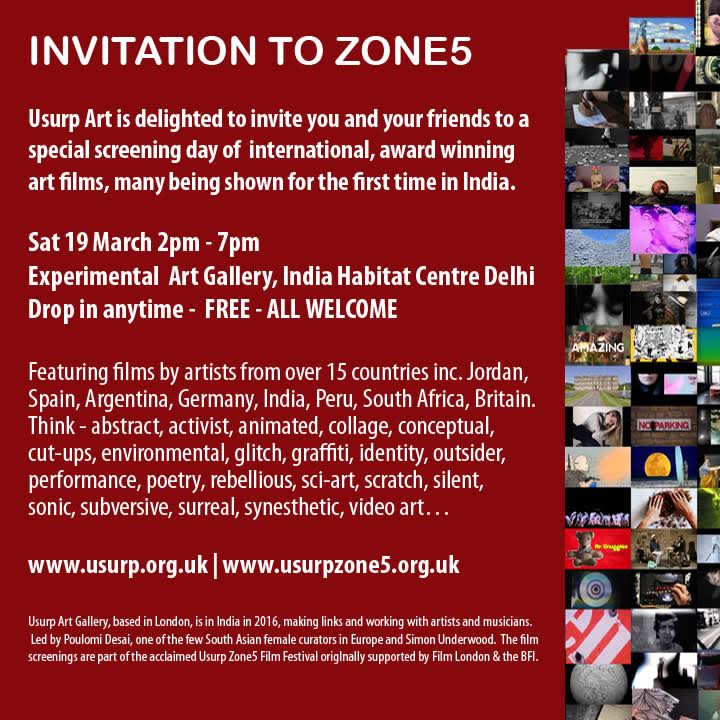I’m delighted that I received an Artist Grant from Brighton Pride Cultural Development Fund, to stage Tricyclic Transform as part of the official Brighton Pride Cultural Program! I’m even in the Brighton Pride Brochure (and it will go on the website too soon)! Date & Venue TBD!
Grassroot Stop Brexit
After the initial shock of the referendum results, pro-Remain MPs are starting to wake up, with David Lammy, Labour MP for Tottenham sounding like the progressive voice of reason. The prioriy right now is not what faction of the Labour party David Lammy belongs to, or whether you prefer another party altogether, the priority is to think rationally and practically in terms of the most probably chains of consequences if the UK follows through with Brexit and do what we can to help anyone who makes their priority to try and stop it.
If you care about trying to save the UK, please do as David Lammy says to help him: sign the petition asking for a second referendum and email your MP asking them to consider the ADVISORY result of the referendum together with other sources of evidence (expert advices about the economic consequences of Brexit, the leave campaigners already backtracking on their NHS and immigration promises ON THE BASIS OF WHICH THE PEOPLE VOTED LEAVE, the risk of Scotland getting their independence and the UK collapsing, a new ‘lost generation’ of under 24s and, in a lesser measure, under 35s, dragged out of the EU against their will and having to suffer the consequences for decades).
If you are short on time, please feel free to use as a template the letter to my own MP copied below. There is a generic template suitable to any Pro-Remain MP (my MP is a Tory) with an added paragraph if your MP is on the left (I also emailed Caroline Lucas from Brighton.)
********************
Email Template:
Dear [NAME OF YOUR MP],
I am writing to you on my own initiative and not part of a write-in campaign. I signed the petition asking for a second referendum that has now reached 3 million signatures. This petition should be debated in Parliament next week and I urge you, as my MP, a Remain backer [ SATISTICS FOR BRIGHTON: and the representative of a city who voted Remain at 68% with a 74% turnout – REPLACE WITH YOUR CITY’S STATISTICS or delete if your city voted leave], to do everything you can to delay Article 50 of the Lisbon treaty until the British people are fully aware of the new developments regarding the consequences of Brexit, be it by a second referendum asking people to decide on a clear practical Brexit plan instead of an abstract idea, a general election or any other way to stop sending the country into a self-made recession. An initiative in that direction has been started by David Lammy, Labour MP for Tottenham, and I urge you to support his efforts when the petition is discussed in Parliament.
The leave campaigners are already backtracking on their NHS and immigration promises, on the basis of which many people voted to leave, and there is a added threat of the United Kingdom collapsing as a country, with Scotland obtaining its independence. Many leave voters are already having second thoughts with these new developments, but once Article 50 of the Lisbon treaty is triggered, there is no going back, the UK will have to leave the EU within 2 years, regardless of whether the deal it gets meets the original expectations of the leave voters or not.
The result of the referendum is only advisory, therefore I urge you and the vast majority of your fellow MPs who backed Remain to consider it together with other sources of evidence including:
- the immediate economic chaos that followed the referendum result
- expert advices about the economic consequences of Brexit
- the leave campaigners already backtracking on their NHS and immigration promises on the basis of which many people voted to leave and their inability to come up with a realistic practical plan
- the risk of Scotland getting their independence and the UK collapsing
- a new ‘lost generation’ of under 24s and, in a lesser measure, under 35s, dragged out of the EU against their will and having to suffer the consequences for decades
- the threat of ‘brain drain’ from England with skilled workers fleeing to mainland Europe and Scotland due to England expressing its contempt for ‘experts’ and its rejection of international perspective. This would greatly affect the high skill and high growth sectors of all major cities who massively backed Remain (London, Brighton, Oxford, Cambridge, Manchester). Plunging these dynamic cities into recession would only make the whole country poorer, hitting first and foremost the most deprived areas who voted ‘leave’ as a generic protest vote.
I urge you to consider the result of the referendum together with all other sources of evidence, and to take the best course of action to protect the country from self-harm.
[INSERT FOLLOWING PARAGRAPH ONLY IF YOUR MP IS ON THE LEFT, LEAVE OUT FOR PRO-REMAIN TORY MPs]
As a fellow progressive, I recognise the ‘leave’ vote as a protest vote against Tory austerity, but the leave campaigners immediately backtracked on their one anti-austerity promise (more money to the NHS). Therefore, I strongly believe that taking the referendum result to the letter and triggering Article 50 immediately would send the UK into self-destruction: ultra-right wing people like Iain Duncan Smith who single-handedly dismantled the Welfare state in the past 5 years would only get rid of what little workers’ rights the EU offers (such as maternity leave, sick leave, 48 hours week) and the European Convention of Human Rights. The loss of these rights will only make it worse for the people already affected by Tory austerity. Their anger will grow, but because their original protest vote was strongly tainted with xenophobia, it will not take the form of social protests but of right-wing, populist riots most likely involving acts of violence against EU migrants, especially from Eastern Europe.
[CONTINUE FROM HERE WHATEVER YOUR MP’s PARTY ]
With the leave campaigners backtracking on their promises and unable to come up with a practical plan, and the economy already suffering within 3 days, there is a chance to get the moderate leave voters to regret their decision now that they are faced with the full consequences. You and the vast majority of your fellow MPs who back Remain have the power to delay triggering Article 50, and save the country from self-destruction.
Sincerely yours.
[YOUR NAME]
[YOUR ADDRESS]
Usurp 5 India screening 19 March 2016
In August 2015, “Ghost House” and “Disciplinary Institutions” were screened at Usurp 5 Festival London. On Saturday 19 March 2016, both films were screened in India at a Festival organised by Usurp 5. I’m only advertising after the fact as I was very busy last week and don’t know anyone who lives in India 🙂
Facebook event for the screening

Usurp Art from London is thrilled to invite you and your friends to a special screening day of international award winning art films at the iconic and amazing India Habitat Centre, our first time in India. Full programme and running order as below.
Sat 19 March 2pm – 7pm
Experimental Art Gallery,
India Habitat Centre Delhi
Drop in anytime
FREE – ALL WELCOME
Featuring films by artists from over 15 countries inc. Jordan, Spain, Argentina, Germany, India, Peru, South Africa, Japan, Britain. Think – abstract, activist, animated, collage, conceptual, cut-ups, environmental, glitch, graffiti, identity, outsider, performance, poetry, rebellious, sci-art, scratch, silent,
sonic, subversive, surreal, synesthetic,
video art…
Usurp Zone5 Film Festival was originally supported by Film Hub London, Film London, BFI Fan Audience Network. This iteration is solely funded by Usurp Art Gallery, which is a member of Film Hub London and a BFI Neighbourhood Cinema.
Address: Lodhi Road, Near Airforce Bal Bharati School, New Delhi, Delhi 110003
Disciplinary Institutions on the big screen this Thursday in Brighton!!!
‘Disciplinary Institutions’ will play on Thursday August 1st at Duke’s at Komedia Brighton as part of the Brighton Pride 2013 Short Film Compilation. Screening starts at 18h30.
I am thrilled because, although my short films have already played on the big screen, it was at festivals abroad so I never got to see them myself, I only ever saw them on computer screens 🙂
I’m really hoping to be able to meet local independent filmmakers and performers on the night. If you are reading this post and you are a Brighton based underground film maker, an actor or performer, someone who does sound design or composes music, please come talk to me at the bar afterwards! The film selected for the festival is purely visual video art, but I’ve been (slowly 🙁 working on a new project for while. Thanks to the recent heatwave, I nearly finished reading ‘Visionary Film’ by P. Adams Sitney (that’s more than 400 pages of really hardcore reading!) on the beach, and it helped me a lot clarify my ideas. Another post to come on this once I manage to copy my notes scribbled in the margins onto the computer… However a narrative short, even a no budget experimental one like I want to do, is not something I can make on my own like purely visual video art. I need at least 3 performers and a sound person. I probably can manage the camera work and editing by myself, and just use natural lighting cleverly. So really, if you are a Brighton based film or performance person, and you like stuff like David Lynch (my film hero <3 ), Jack Smith, Kenneth Anger, 'The Blue Angel', Ingmar Bergman, Fassbinder, come talk to me! We could work together and make absolutely no money :)
Background Research on Lev Manovich’s Soft Cinema
At the end of my MA, one of the avenues I wanted to explore for further work was to use algorithm to relinquish control on the editing of a piece of video art.
Last month I took part in onedotzero cascade and my team decided to explore narrative in a visual way (I’ll blog more about cascade and this project in a subsequent post). Because Lev Manovich’s Soft Cinema was relevant to our project, I did a bit of background research on it to present to my team.
http://en.wikipedia.org/wiki/Database_cinema
Manovich opposes narative and database in his theoretical writings. However, he cites Peter Greenaway as an example of database cinema (soft cinema). Yet, Greenaway does not do away with narrative, rather he experiments with non-linear forms of narrative, in the tradition of modernist literature.
http://www.softcinema.net/?reload
Soft Cinema as a software edits movies in real time by selecting multimedia elements from a database based on rules defined by the authors.
http://www.softcinema.net/form.htm
SOFT CINEMA explores 4 ideas:
1. “Algorithmic Cinema.”
Using a script and a system of rules defined by the authors, the software controls the screen layout, the number of windows and their content. The authors can choose to exercise minimal control leaving most choices to the software; alternatively they can specify exactly what the viewer will see in a particular moment in time. Regardless, since the actual editing is performed in real time by the program, the movies can run infinitely without ever exactly repeating the same edits.
2. “Macro-cinema.” If a computer user employs windows of different proportions and sizes, why not adopt the similar aesthetics for cinema?
3. “Multimedia cinema.” In Soft Cinema, video is used as only one type of representation among others: 2D animation, motion graphics, 3D scenes, diagrams, maps, etc.
4. “Database Cinema.” The media elements are selected from a large database to construct a potentially unlimited number of different narrative films, or different versions of the same film. We also approach database as a new representational form in its own right. Accordingly, we investigate different ways to visualise Soft Cinema databases.
I’m not too interested in ‘2 – Macros cinema’ because I like the traditional aesthetics of one frame.
I’m interested in ‘3 – multimedia cinema’ because it offers the possibility to mix video clips with sound and/or music from a different source, or superimpose a still image on a video, but not in the way Manovich does it: ‘While some music videos and artist videos already mix some of these different types of imagery in one work, Soft Cinema assigns each type of imagery to a separate window in order to dramatize the new status of “normal” video, photographic and film image today – no longer the dominant but just one source of visual information about reality among many others.’ Apparently, Soft cinema keeps the different media in separate windows, therefore not creating a real multimedia final product. I would rather find a way to mix the contents together like it is done in some video clips.
What I’m really interested in is ‘1 – algorithmic cinema’ (4 – database cinema cannot in my opinion really be considered as a separate concept, because the database is only the collection of multimedia raw material the algorithm will choose from. The database itself does nothing but hold a collection of content.)
The Soft cinema website explains how ‘algorithmic editing of media materials’ works:
‘Each video clip used in Soft Cinema is assigned certain keywords that describe both the “content” of a clip (geographical location, presence of people in the scene, etc.), and to its “formal” properties (i.e., dominant color, dominant line orientation, contrast, camera movement). Some of the keywords are automatically generated by an image-processing software (written in VideoScript), while others are input by hand. The program (written in LINGO) assembles the video track by selecting clips one after another using a system of rules (i.e. an algorithm). Different systems of rules are possible. For instance, one system selects clips closest in color, or type of motion to a previous one; another matches the previous clip in content and partially in color, replacing only every other clip to create a kind of parallel montage sequence, and on and on.
The current version of Soft Cinema software allows the author to define such a particular system of rules, which it then uses to compile a sequence of video clips that best satisfy these rules. However, it is also possible to create other versions of the software that would give the author tighter control over the sequencing. For instance, one version may involve a video track completely edited by the author beforehand. Some shots could be designated as “replaceable” while others would remain unmodified (to keep narrative continuity.) Another version may contain a variable set by the author, which tells the program the probability of any shot being replaced. In summary, instead of posing complete randomness against the complete control of a human author, Soft Cinema investigates a different paradigm: using a computer as an “association machine” that complements / reacts to images selected by the user with other images.’
Blog!
Hello,
For the moment my blog is still at:
http://melaniemenardarts.wordpress.com/
I am trying to move the content here if that is possible 🙂



